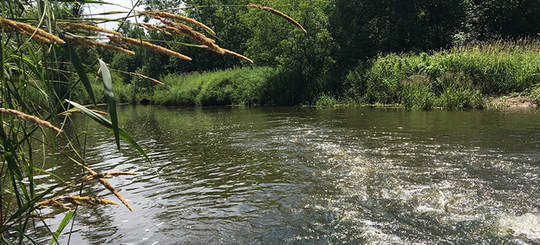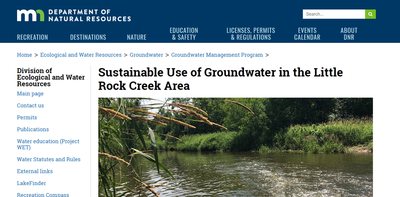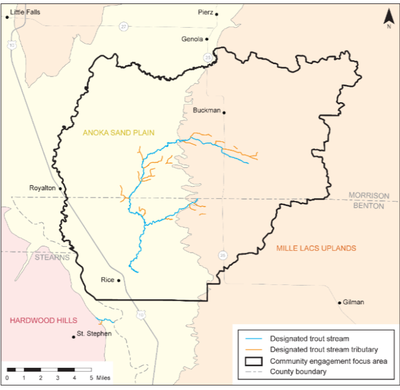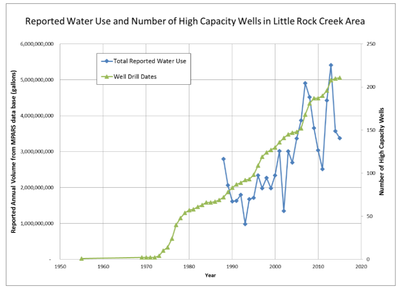There are many competing interests for water; water appropriations in Minnesota are guided by statute. The highest priority is for domestic consumption, but ecosystem values are critical, too, so DNR must balance the stated water priorities with making sure that streams and other surface waters are also not depleted.
Case in point is Little Rock Creek, just north of St. Cloud in central Minnesota. This creek is a trout stream that leads to the Mississippi, and has been designated as impaired. There is extensive irrigated agriculture in the watershed, along with several small cities and considerable private well development. Animal agriculture is growing in this watershed as well. Groundwater use has lowered the water table and affected the ecology of Little Rock Creek. There’s extensive area where nitrate levels exceed the drinking water limit and nutrients are choking Little Rock Lake. DNR has worked with local interests in all sectors and has a draft plan on public notice now. LWV UMRR is working with the local League (LWV St. Cloud) to comment on the plan; a public meeting will be held on December 9. The DNR plan is very clearly written and illustrated and so the information is very understandable. One big shortcoming, however, is the fact that this DNR plan only addresses water use, not the high and increasing nitrate levels. This is because other state agencies are involved here – the Minnesota Department of Agriculture is developing rules for nitrogen fertilizer management; the Minnesota Department of Health works with public water supplies to ensure that standards are met and the Minnesota Pollution Control Agency works with county governments to regulate septic systems and livestock operations. Fixing the problems here will be a long effort taking significant resources and requiring cooperation from many diverse sectors.
1 Comment
5/19/2018 07:17:18 am
Groundwater depletion is scary and it is happening in almost every corner of the world. We really need to take all these environmental issues seriously if we want to slow down the destruction process if not stop it completely. They say whatever is happening now is inevitable but I don't think we should ever use this as an excuse not to do something about it and always keep a blind eye. Overcrowding maybe a big factor on groundwater depletion. I guess we need to scatter all our sources of groundwater and not take it from just one particular area.
Reply
Leave a Reply. |
| LWV Upper Mississippi River Region | UMRR blog |




 RSS Feed
RSS Feed